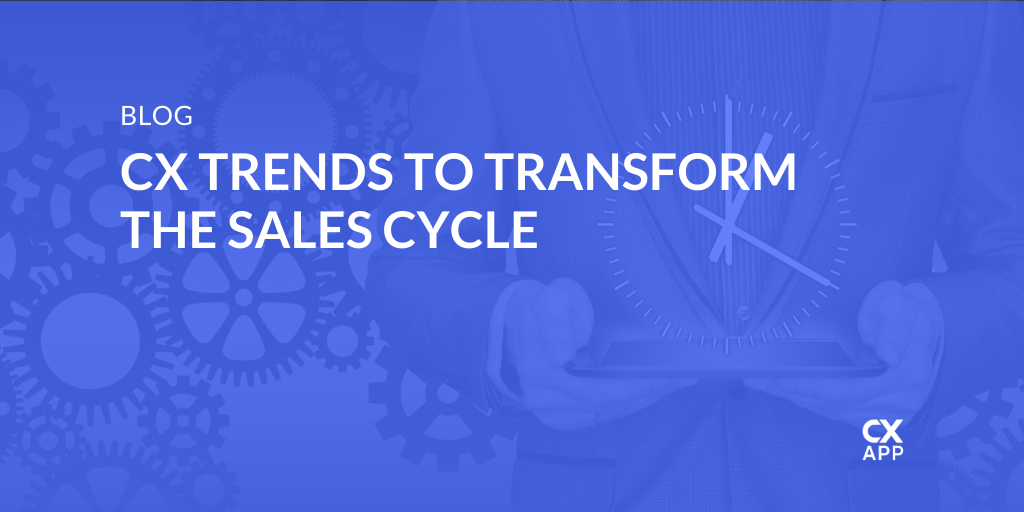Anytime is the perfect time to assess the current state of the modern customer experience journey and figure out what’s actually panned out and where we’re going in the world of CX.
Customer Expectations Have Increased Considerably
You can blame modern technology and devices. You can blame the “digital age” and the rise of modern digital content or experiences. You could even blame the Millennial generation for coming of age and gaining more influence over the current state of the market. But let’s not place blame, let’s embrace.
The reality is, all of these things contributed to a shift in customer expectations. For whatever reason you ascribe, customers are now more demanding than ever, and organizations must become better prepared to deal with said needs. More specifically, consumers demand greater convenience, faster and more relentless campaigns and experiences, and robust support.
The sad truth is if you cannot dedicate the resources or time to what your customers want, then someone else is going to fill the gap — likely your closest competitor.
Feedback and Activity Should Be Used to Predict Behaviour
Big data and advanced analytics have opened the door to many new opportunities especially in regards to predictive and adaptive strategies. Customer experience software and capable algorithms can accurately predict what customers are going to do before they do it.
You — with the right tools, of course — now have access to a rich database of customer information and details, including behavior, likes and dislikes, and personal sentiments.
Continuous Experiences Are Valuable
You’ve no doubt heard of transactional loyalty. It’s when a customer instantly becomes part of your entourage simply after buying a product. In the past, the end of the sales funnel was also the end of the road for your team. Once you make a sale, you can move on to other channels, effectively pushing toward more sales and new customers.
That’s no longer the case. Something called emotional loyalty now takes center stage, and its fueled by seemingly endless or continuous experiences. After you sell a product or good, for instance, the support you offer is also crucial to a customer’s sentiment toward your company.
Customer Experience Should Be Treated As Currency
Customer experience has always been around. It’s also been called other things, looked like other things, and even been talked about as is. But with each passing year, defining and employing a good customer experience strategy has become more prevalent. There are now even full professions dedicated to customer experience, associations, and industry events all focused on CX.
Customer experience, while not necessarily a tangible thing or commodity, is a form of currency that is earned, acquired, spent, and essentially pays out as it has a ‘customer/sales monetary value’ associated with it.
Incorporate A Social-In Strategy
Social “amplification” is nothing new, but it has become more prominent in the current landscape. It has also evolved considerably. Where it was once about basic-level promotions and engagements, it’s not only about social-out but also a good social-in strategy, where you’re bringing your employees, customers, partners etc. into the fold.
In the past, it was important that you didn’t take on too much socially so that you could avoid wearing yourself and your teams thin. Thanks to modern tools, this is no longer as much of a concern. Advanced analytics, user metrics, machine learning, scheduling tools, and streamlined content can all play a role in more automated, conveniently-run social campaigns.
But the jewel here is social amplification within an organization or a community. It plays into employee morale, corporate social responsibility, teamwork, and a sense of belonging.

A Cross-Platform Approach Is Best
Mobile is the champion of traffic and engagement, sure, but it’s not the only device that holds importance in the average consumer’s household. You must remember that there is really no device favoritism among consumers. Mobile is largely the go-to because it can be used anywhere, anytime. The average consumer, however, has up to 3 different devices they use interchangeably at a given time.
What does it mean for you? Well, it’s simple really. You want to be where your audience and customers are, so your goal should be to deliver a seamless, user-friendly and cross-platform experience. Users should be able to stop what they are doing on one device, move to another, and continue exactly where they left off. In addition, their personal preferences, activities, habits, and data should all be connected in some way.
Collaborative Solutions Always Win
More connected, capable, and cloud-based remote collaboration and sharing tools make it possible to handle direct interactions more smoothly. This includes collaboration between internal teams and employees, contractors, partners, and even consumers.
Stream-based messaging and video conferencing tools make it possible to chat and engage face-to-face. Smartphones, tablets, and laptops allow you to tap into a network or community from anywhere, anytime. Cloud-based tools and apps allow you to collaborate, in real-time with colleagues and partners.
The fact of the matter is that modern technology has made it easier than ever to work remotely, and collaboratively with others. That extends beyond the business environment and also into the realm of business-to-consumer relations, as well.
Create A Central Hub
Cross-platform and multi-channel experiences tend to muddy the waters per se when it comes to efficiency. That’s why a theme or push towards centralization has taken hold in the current landscape. It’s all about offering a convenient, centrally located dashboard or channel to manage everything from a single device. You’re taking an entire ecosystem of consumer data and activities, and compacting it down to a single location in regards to controls, oversight, and updates.
This also means that apps or services are expanding away from their normal feature-sets to offer something above and beyond. Think, WhatsApp and its multitude of features and support functions for users — things like scheduling, in-app mobile payments, and transaction support. Facebook has also done this, with the standard social network features alongside instant messaging, in-app transactions and money transfers, communities and groups, and even updated forums.
Include GDPR and Data Regulations
The General Data Protection Regulation or GDPR may hold incredible transformational power, as it provides just the right amount of pressure to force change. In regards to customer data, the collection, handling, and storage of said information must follow a specific set of rules.
This is especially important for businesses that aim to offer personalized, contextually relevant experiences. Amazon is the obvious example, but all e-commerce and retail organizations are affected. It’s all about owning and controlling the collected data, which is what you use to deliver a tailored experience.
GDPR reveals just how valuable modern data is to everyone, not just businesses, and encourages all of us to start taking it's handling a little more seriously — which is always a good thing!
It has helped show modern businesses the need to protect the digital assets of not just their customers, but employees, partners, and everyone in-between. This breeds more efficient processes which work to the benefit of the organization and its constituents.
Don’t Forget to Play It Smart, Figuratively
Despite the aforementioned trends, remember, you must be prepared to deliver a mobile-first, omnichannel and always-on experience for your customers that is both meaningful and contextually relevant.
In simple terms, it’s okay to follow and deploy the discussed trends — and even something we haven’t touched upon — just make sure your strategy follows the mobile, omni-first approach. Smart connected experiences are necessary and will continue to be the focus for businesses and consumers alike into the future. They offer sheer convenience, user-friendly channels and higher engagement levels across the board.


